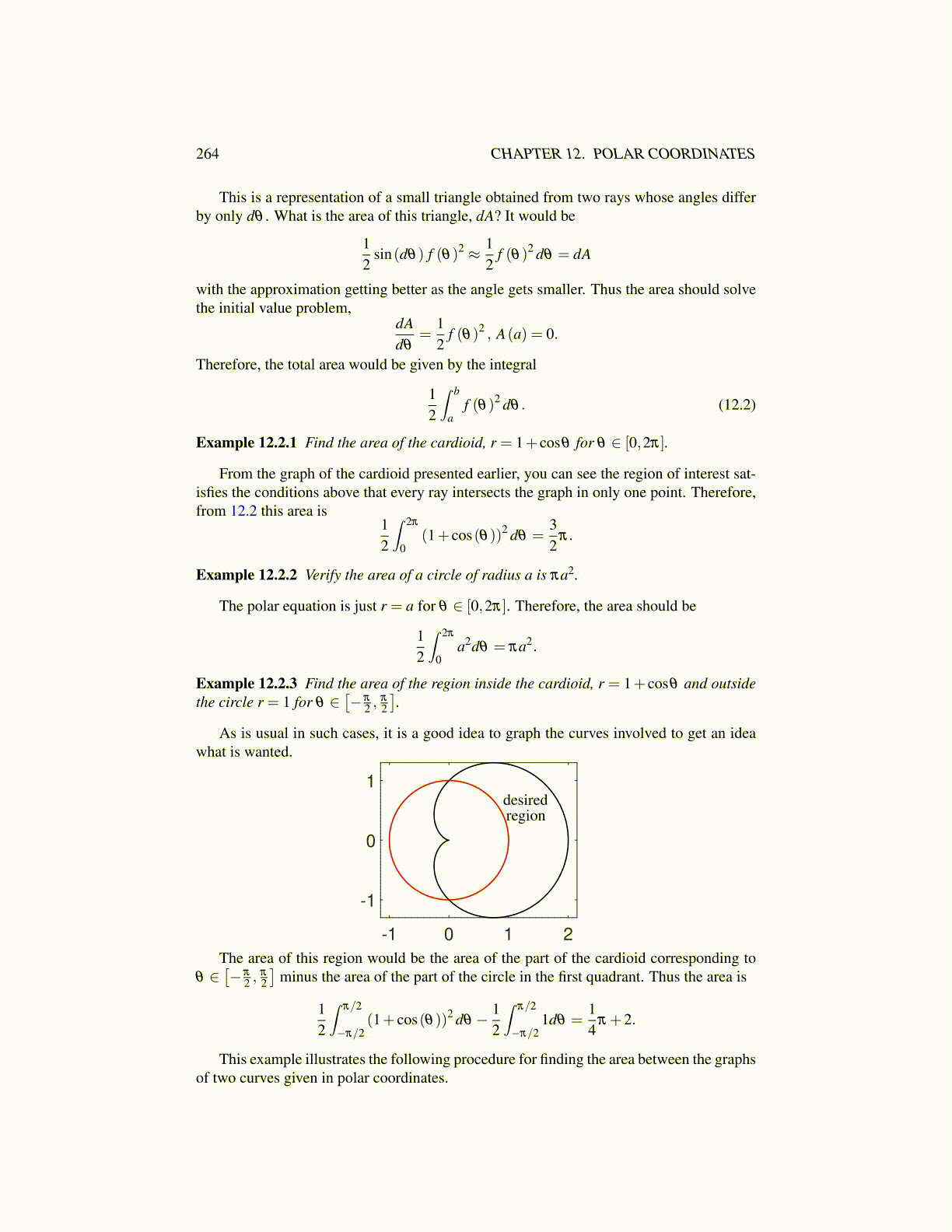
264 CHAPTER 12. POLAR COORDINATES
This is a representation of a small triangle obtained from two rays whose angles differby only dθ . What is the area of this triangle, dA? It would be
12
sin(dθ) f (θ)2 ≈ 12
f (θ)2 dθ = dA
with the approximation getting better as the angle gets smaller. Thus the area should solvethe initial value problem,
dAdθ
=12
f (θ)2 , A(a) = 0.
Therefore, the total area would be given by the integral
12
∫ b
af (θ)2 dθ . (12.2)
Example 12.2.1 Find the area of the cardioid, r = 1+ cosθ for θ ∈ [0,2π].
From the graph of the cardioid presented earlier, you can see the region of interest sat-isfies the conditions above that every ray intersects the graph in only one point. Therefore,from 12.2 this area is
12
∫ 2π
0(1+ cos(θ))2 dθ =
32
π.
Example 12.2.2 Verify the area of a circle of radius a is πa2.
The polar equation is just r = a for θ ∈ [0,2π]. Therefore, the area should be
12
∫ 2π
0a2dθ = πa2.
Example 12.2.3 Find the area of the region inside the cardioid, r = 1+ cosθ and outsidethe circle r = 1 for θ ∈
[−π
2 ,π
2
].
As is usual in such cases, it is a good idea to graph the curves involved to get an ideawhat is wanted.
-1 0 1 2
-1
0
1
desiredregion
The area of this region would be the area of the part of the cardioid corresponding toθ ∈
[−π
2 ,π
2
]minus the area of the part of the circle in the first quadrant. Thus the area is
12
∫π/2
−π/2(1+ cos(θ))2 dθ − 1
2
∫π/2
−π/21dθ =
14
π +2.
This example illustrates the following procedure for finding the area between the graphsof two curves given in polar coordinates.